Armadillos are expanding their range. It's more and more likely you're going to see one of these fascinating dinosaurs in your yard. Would you like to learn more? This blog post is for you!
This video is a great overview on armadillos.
Armadillos have been around since prehistoric times and that’s reflected in how they look and act. The armadillo we have in the Southeast is the nine-banded, although there are species ranging from over a hundred pounds to just 4 ounces.
There are so many fascinating things about armadillos it’s hard to know where to start!
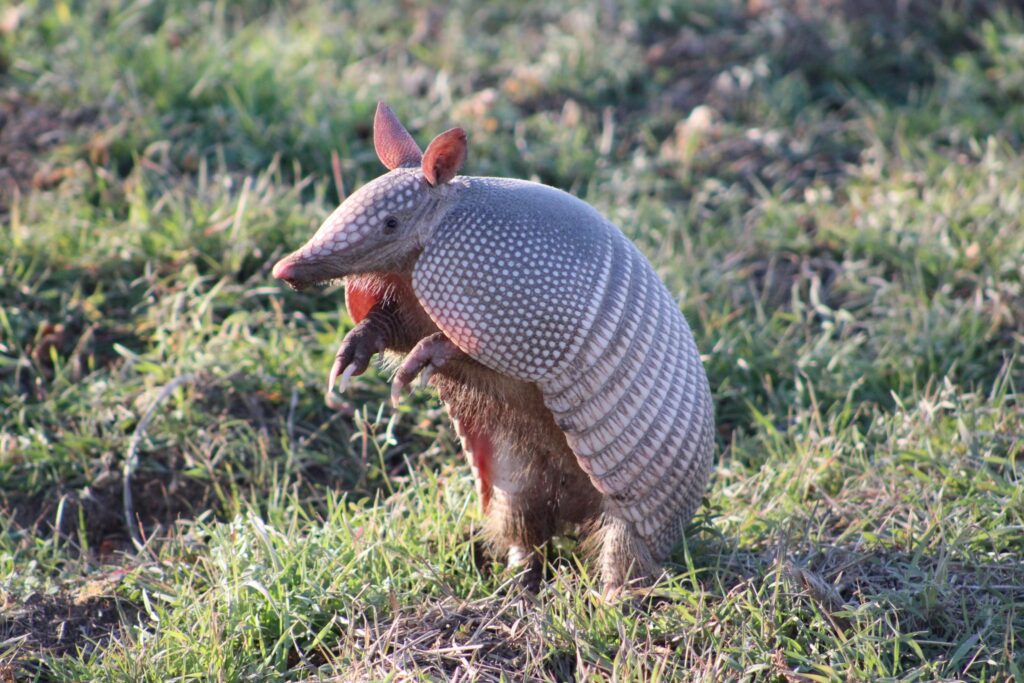
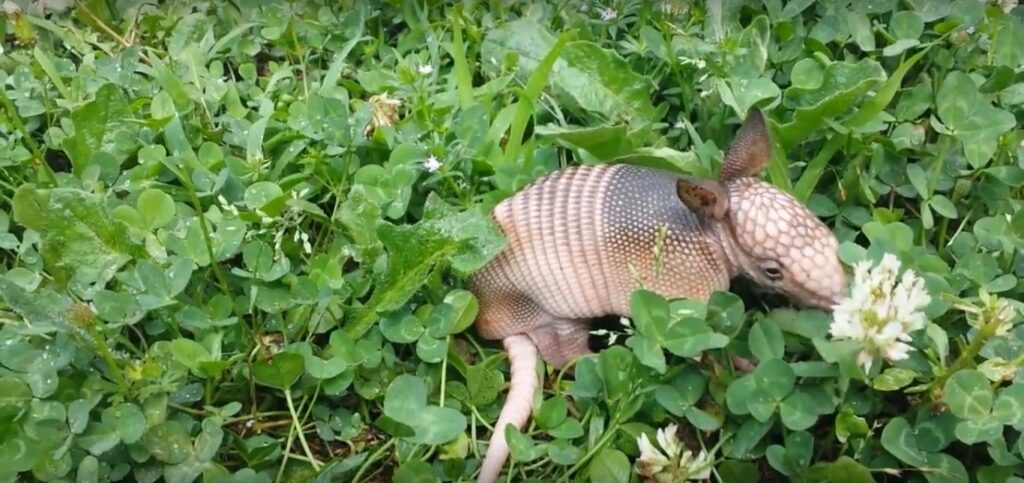
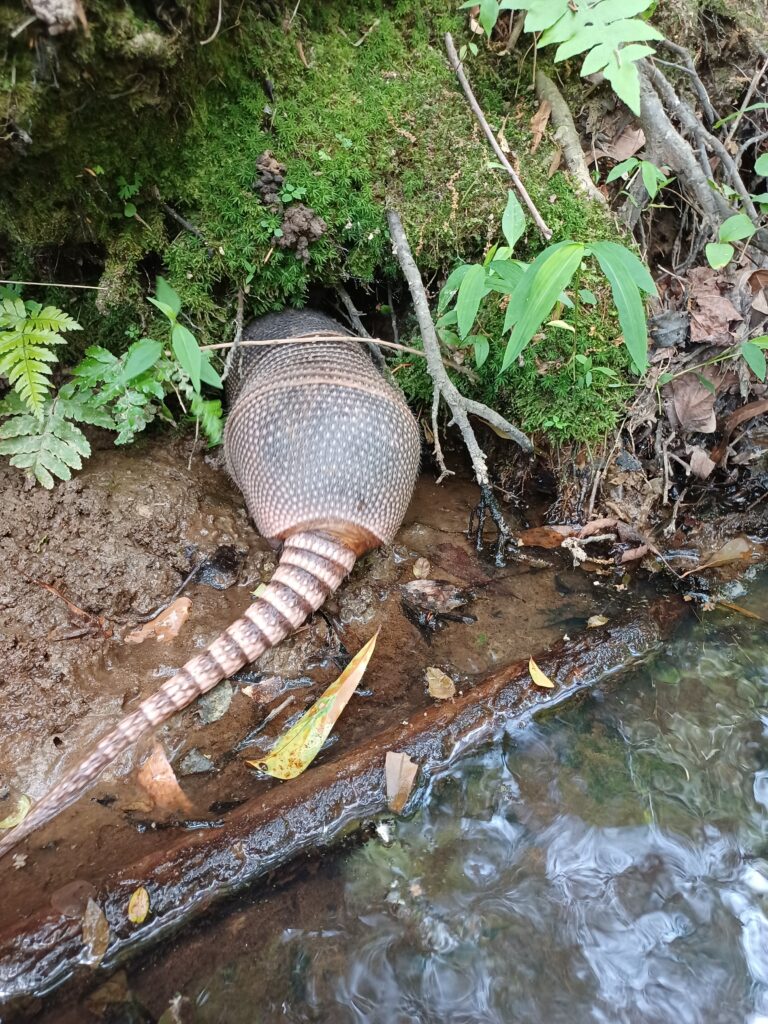
They use their strong claws to dig in leaf litter and soft soil. Garden beds are perfect for digging and that upsets a lot of people! Their holes also can be a danger for livestock. Their benefits outweigh their drawbacks as they keep insects and agricultural pests out of your yard.
They will build multiple burrows, some of which are insect traps. Insects fall into the burrow- it’s like our pantry!
After digging their many burrows they gather leaves and grass to line them. They collect the leaves and then hold them between their front and back feet, hopping the leaves backwards to their burrow. It’s so funny to see! Their nesting burrows have been measured up to 16 feet long!
Armadillos are most active at night in the Summer, and midday in the Fall and Winter. They don’t have fur or store fat so they are very sensitive to cold weather and cannot hibernate.
Armadillos have long, sticky tongues as you can see in this video.
They use these tongues to grab prey and then chew them up with their peg-like molars. They do not have sharp teeth and don’t bite.
When I rehabilitate them, I make a slurry of different high protein foods that is easy to lick up. Because their snout is so long, I have to place rocks in their water dish and serve their meals in “lick-mats” or very shallow dishes so they don’t get it up their nose.
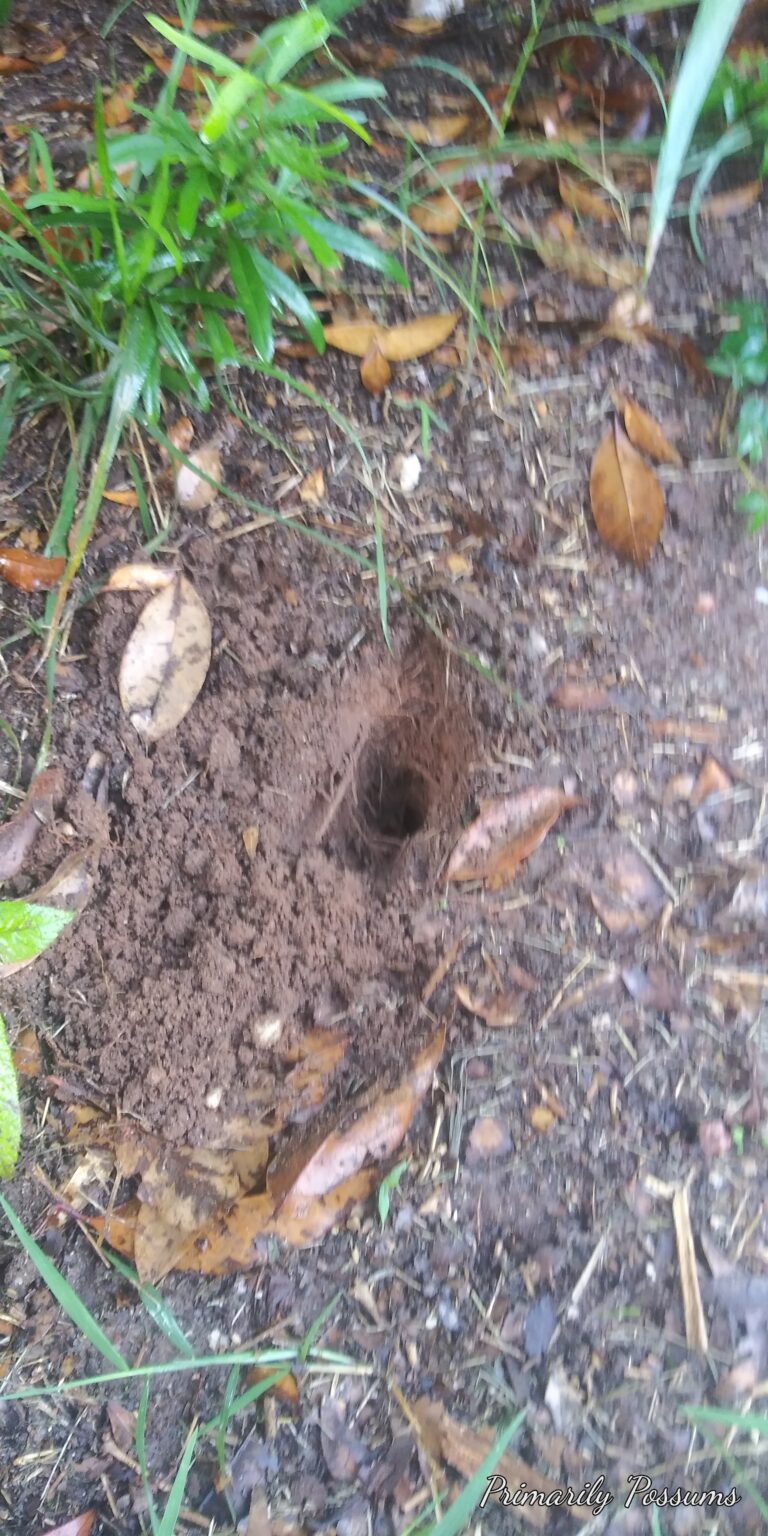
If you find a hole like this in your yard, you have an armadillo. You can see the shape of their snout in the hole. They will dig up to 6 inches down and lick up and chew their dinner.
They are solitary creatures except during mating season and when they are young.
Their territory is fairly large and will move on once they have eaten all the pests in your yard.
Trapping them may remove that one armadillo, but if you have tasty bugs, another armadillo will show up!
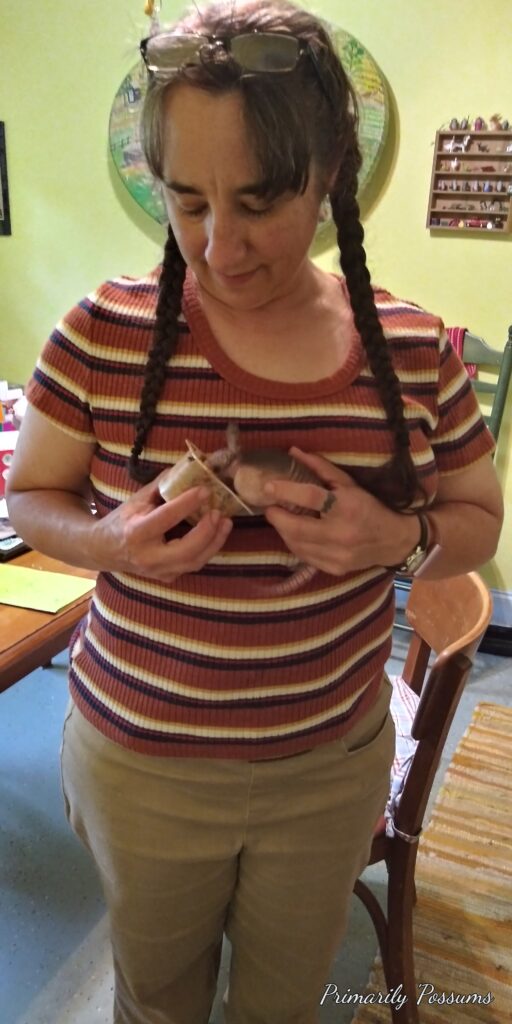
You can see here how very tiny the babies are.
They stay with Mom for at least 3 months, drinking milk and foraging alongside her.
In the rehabilitation setting we offer them the opportunities to dig and find bugs, as well as provide them nesting materials for practice.
Armadillos do not get attached to their carers and will eventually wander away without looking back. It is the same with their Mom.
They may stay through the Fall with their siblings but eventually go off on their own
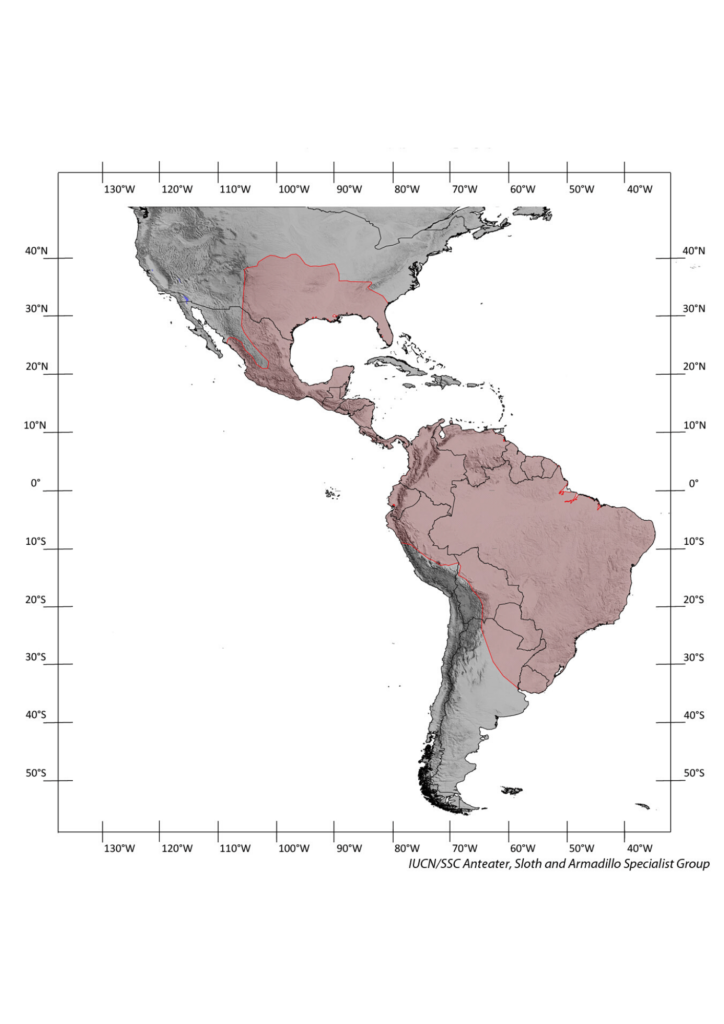
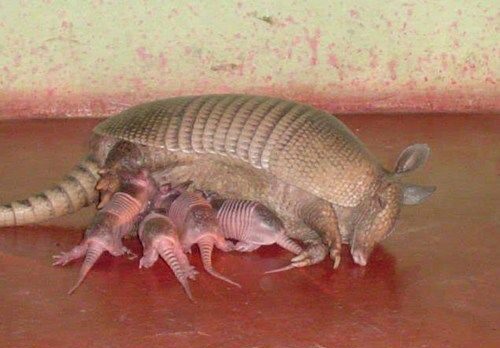
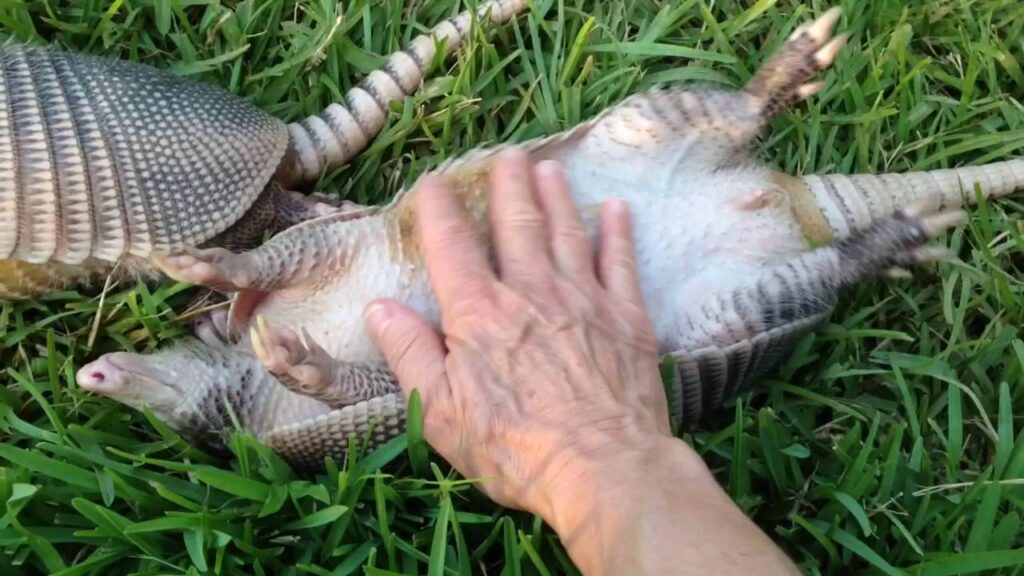





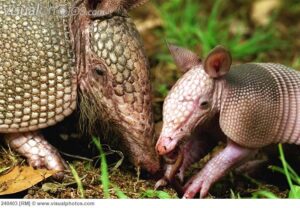
 2025 Sabbatical
2025 Sabbatical